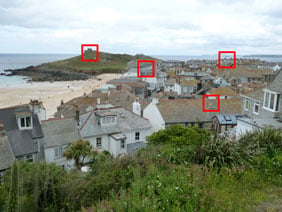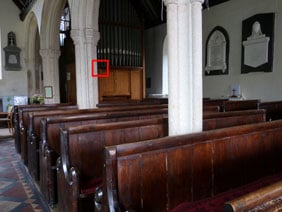Panasonic Lumix DMC-TZ8 / ZS5
-
-
Written by Gordon Laing
Quality
Panasonic Lumix DMC-TZ8 / ZS5 vs Sony Cyber-shot DSC-H55 vs Nikon COOLPIX S8000
Panasonic Lumix DMC-TZ8 / ZS5 |
Sony Cyber-shot DSC-H55 |
Nikon COOLPIX S8000 | ||
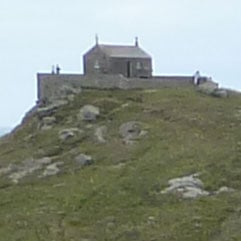 | 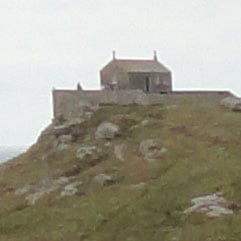 | 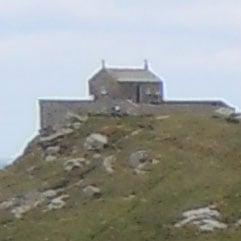 | ||
f4, 80 ISO |
f4, 80 ISO |
f3.5, 100 ISO | ||
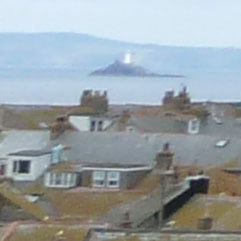 | 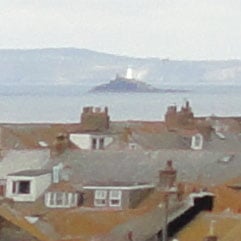 | 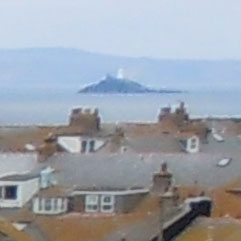 | ||
f4, 80 ISO |
f4, 80 ISO |
f3.5, 100 ISO | ||
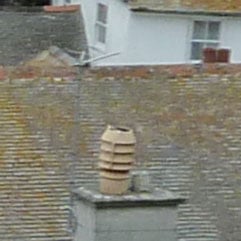 | 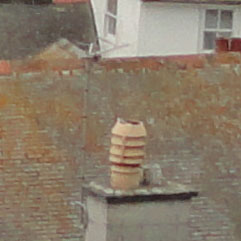 | 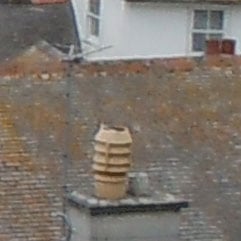 | ||
f4, 80 ISO |
f4, 80 ISO |
f3.5, 100 ISO | ||
 | 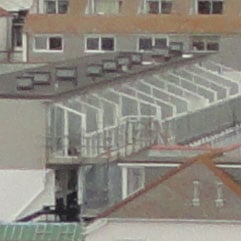 | 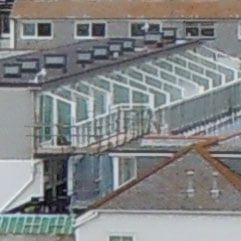 | ||
f4, 80 ISO |
f4, 80 ISO |
f3.5, 100 ISO |
The above image was taken with the Panasonic Lumix TZ8 / ZS5 in Program mode. The lens was set to 5 mm (30mm equivalent) and the metering selected an exposure of 1/400th of a second at f4 with an ISO setting of 80. The original 4000 x 3000 pixel image had a file size of 4.92MB. These test images were shot in cloudy bright conditions so the subject doesn’t present the same kind of exposure challenges as it does in bright sunlight with a high dynamic range encompassing bright highlights on the white walls and deep shadow in the foreground vegetation. The Lumix TZ8 / ZS5 has, nonetheless, made a good job of the exposure, though there is some blown highlight detail in the sky. The detail in the shadow areas is good, though, and we think the Lumix could have retained some of that highlight detail by choosing a slightly faster shutter speed without a negative impact on the shadows. The colours, partucularly the greens are vibrant, well-saturated and natural-looking, but the white balance is a little on the blue side. When you look at the crops side by side both the Lumix TZ8 / ZS5 and COOLPIX S8000 crops look very blue when compared to the more neutral-looking results from the Cyber-shot H55, but seeing them side-by-side like this probably makes it look worse than it would appear if you were viewing the image in isolation.. Now let’s look at the detailed crops. Generally, the Lumix TZ8 / ZS5 crops show a good level of detail, particularly in the crops taken from the central region of the image. But as you move towards the edge of the frame the clarity and definition begins to falter. The best detail can be seen in the top crop of the chapel and the last one of the balcony. The fine detail in the balcony dividers, the rails and the green glass roof right at the bottom of the crop is crisp and clear. But in the lighthouse crop the lighthouse itself is poorly defined and the houses in the foreground look blurred. There’s also some evidence of image processing in the form of a white halo around the chapel and along the horizon – if you’re looking at this on an LCD screen changing your vertical angle of view will make it more visible. You’d probably never notice this unless you were looking at full sized images, but it’s the kind of thing that further image processing, particularly sharpening will make worse. The crops from the Lumix TZ8 / ZS5 compare pretty favourably with those from the Sony Cyber-shot H55. Like the TZ8 / ZS5, the Cyber-shot H55 also suffers from haloing on contrasting edges, but not quite to the same degree. And if you compare the detail in the crops overall there’s not a great deal to choose between them. The Cyber-shot H55 is more consistent, though; the detail at the edge of the frame is just as well defined as that in the crops from the centre and that can’t be said for the Lumix TZ8 / ZS5. While some regions of the Lumix TZ8 / ZS5 image show better definition than the Cyber-shot H55, others, in particular the lighthouse crop, look markedly worse. The Nikon COOLPIX S8000 had the same problem with white balance as the Lumix TZ8 / ZS5 and has produced an image with a slight blue cast. It also has the halo problem, though to a greater degree than both the Lumix TZ8 / ZS5 and Cyber-shot H55. Generally the definition in the COOLPIX 8000 crops isn’t as good as in the Lumix ones; while the edge crops – where the Lumix performed worst – show a similar level of detail to the COOLPIX S8000, as you move towards the centre, the Lumix gets better but the COOLPIX doesn’t. The COOLPIX images also exhibit a granular clumpiness that further obscures fine image detail. Now let’s see how they compare at higher sensitivities in our High ISO Noise results. |
Panasonic Lumix DMC-TZ8 / ZS5 vs Sony Cyber-shot DSC-H55 vs Nikon COOLPIX S8000 High ISO Noise
|
To compare noise levels under real-life conditions we shot this scene with the Panasonic Lumix DMC-TZ8 / ZS5, Sony Cyber-shot DSC-H55, and the Nikon COOLPIX S8000. The lenses on all three cameras were set to approximate the same field of view and ISO was manually set. |
The above shot was taken with the the Panasonic Lumix DMC-TZ8 / ZS5 in Program mode with the lens at a wide angle setting of 5mm (30mm). The ISO sensitivity was set to 80 and the exposure was one second at f3.4. The crops are taken from the area marked with the red square and presented below at 100%.
Overall, the results from the Lumix TZ8 / ZS5 are very good, with the lower ISO settings producing good detail with little evidence of noise. It’s really very hard to fault the 80 ISO crop which shows excellent details in both the stone column on the left and the wood panelling. At 100 ISO there are one or two specles beginning to appear, but even in the 100 percent crops you have to look very hard to spot the change.
200 ISO is a bit of a watershed, the detail in the stone column has deteriorated and, though it’s less noticeable the same thing has happenned in the wood panelling; this is still a very acceptable image though. At 400 ISO the noise is beginning to gain the upper hand, but the Lumix TZ8 / ZS5’s attempts to process it out are effective without being intrusive, the worst of the noise has been subdued without too much softening of image detail as a result.
At 800 ISO it’s starting to look bad. The edge of the column is beginning to break up and it’s all looking very clumpy. and at 1600 ISO it’s becoming hard to tell the noise and the processing apart from any actual image pixels.
You don’t have to look very hard to see that the Lumix TZ8 / ZS5 outshines the COOLPIX S8000 every step of the way from the COOLPIX S8000’s lowest 100 ISO setting all the way up the scale. In fact we’d go so far as to say that the Lumix TZ8 / ZS5 400 ISO crop is better than the COOLPIX S8000 100 ISO crop.
The comparison with the Sony Cyber-shot H55 is more interesting. At 80 ISO we think the Lumix has the edge on the H55, the crop is cleaner and shows more detail. From 100 ISO upwards the crops differ, but you couldn’t really say one was better than the other. The Panasonic crops are smoother, the Sony ones granier, it’s really a question of personal preference.
It’s interesting to note that the 3 Megapixel High Sensitivity scene mode on the Panasonic Lumix DMC-TZ8 / ZS5 has produced a far better result than any of the manual ISO settings above 400 ISO, if you can live with the smaller image size, this is a really useful low-light feature to have at your disposal. Now head over to our Panasonic Lumix DMC-TZ8 / ZS5 gallery to see some more real-life shots in a variety of conditions.
Panasonic Lumix DMC-TZ8 / ZS5 |
Sony Cyber-shot DSC-H55 |
Nikon COOLPIX S8000 | ||
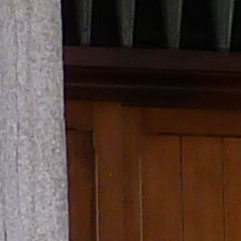 | 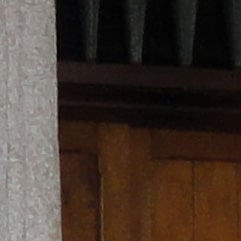 | |||
80 ISO |
80 ISO |
80 ISO Not available | ||
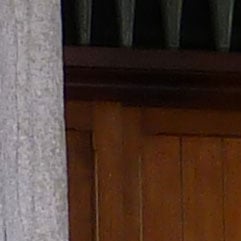 | 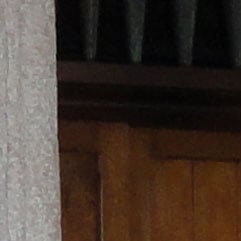 | 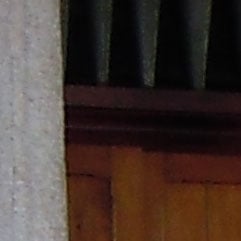 | ||
100 ISO |
100 ISO |
100 ISO | ||
 | 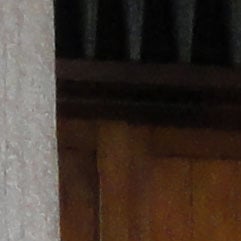 | 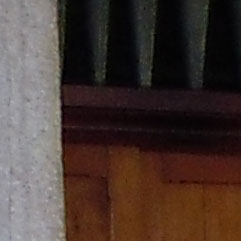 | ||
200 ISO |
200 ISO |
200 ISO | ||
 | 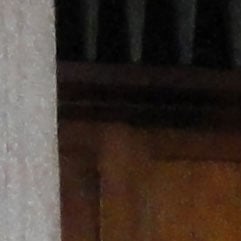 | 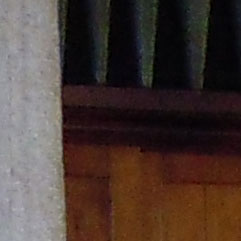 | ||
400 ISO |
400 ISO |
400 ISO | ||
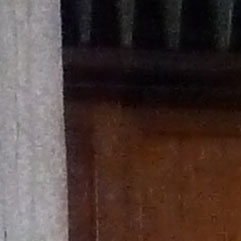 | 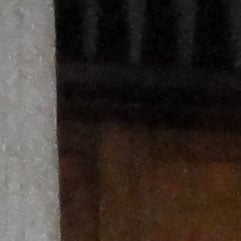 | 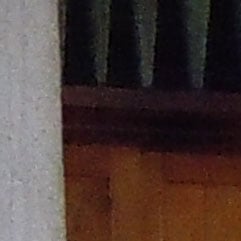 | ||
800 ISO |
800 ISO |
800 ISO | ||
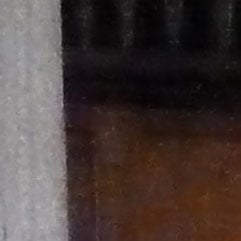 | 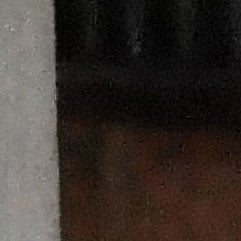 | 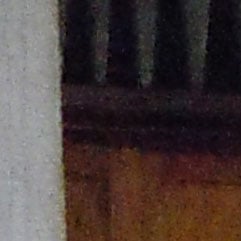 | ||
1600 ISO |
1600 ISO |
1600 ISO | ||
 | 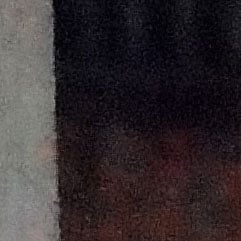 | 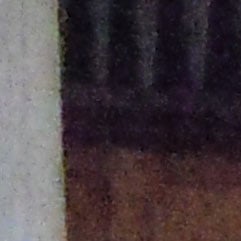 | ||
2000 ISO (Low Light scene mode) |
3200 ISO |
3200 ISO |

